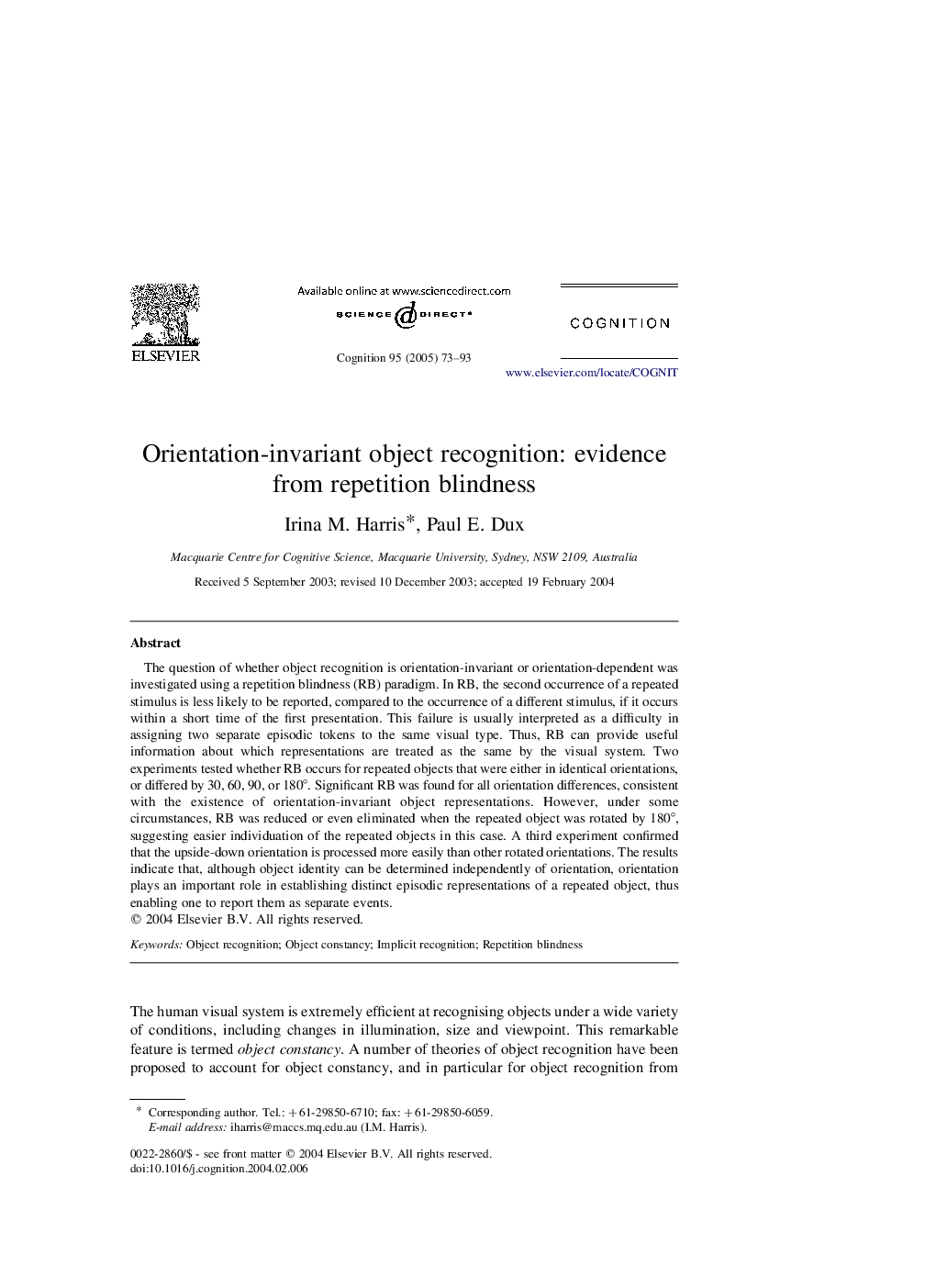| Article ID | Journal | Published Year | Pages | File Type |
|---|---|---|---|---|
| 10458136 | Cognition | 2005 | 21 Pages |
Abstract
The question of whether object recognition is orientation-invariant or orientation-dependent was investigated using a repetition blindness (RB) paradigm. In RB, the second occurrence of a repeated stimulus is less likely to be reported, compared to the occurrence of a different stimulus, if it occurs within a short time of the first presentation. This failure is usually interpreted as a difficulty in assigning two separate episodic tokens to the same visual type. Thus, RB can provide useful information about which representations are treated as the same by the visual system. Two experiments tested whether RB occurs for repeated objects that were either in identical orientations, or differed by 30, 60, 90, or 180°. Significant RB was found for all orientation differences, consistent with the existence of orientation-invariant object representations. However, under some circumstances, RB was reduced or even eliminated when the repeated object was rotated by 180°, suggesting easier individuation of the repeated objects in this case. A third experiment confirmed that the upside-down orientation is processed more easily than other rotated orientations. The results indicate that, although object identity can be determined independently of orientation, orientation plays an important role in establishing distinct episodic representations of a repeated object, thus enabling one to report them as separate events.
Related Topics
Life Sciences
Neuroscience
Cognitive Neuroscience
Authors
Irina M. Harris, Paul E. Dux,
